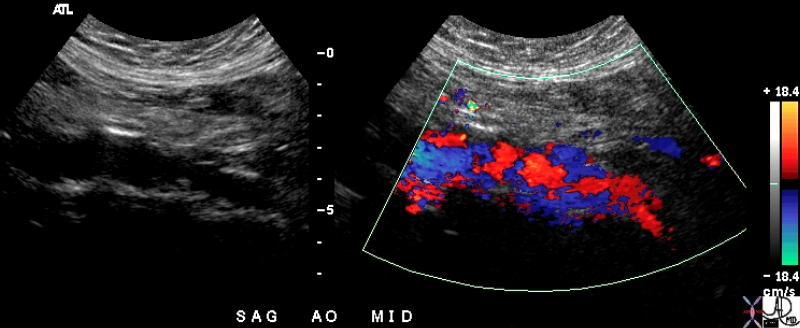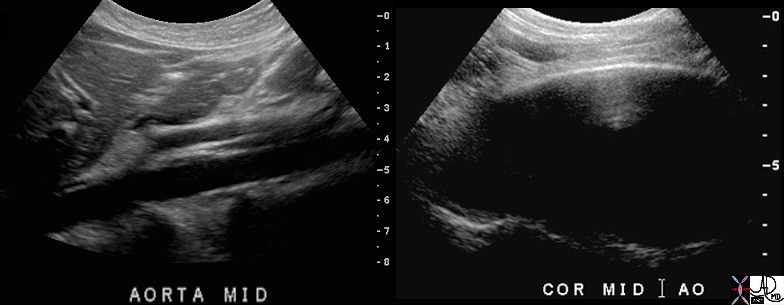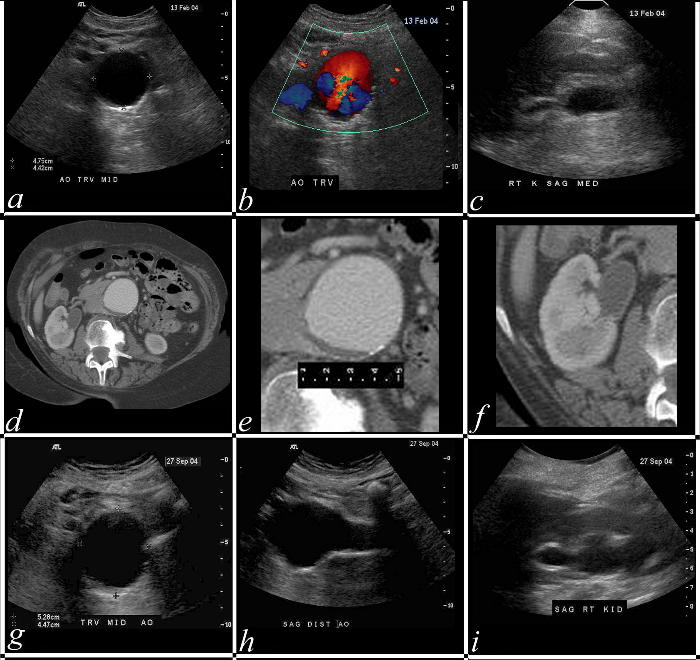Growth and Aging
Copyright 2007
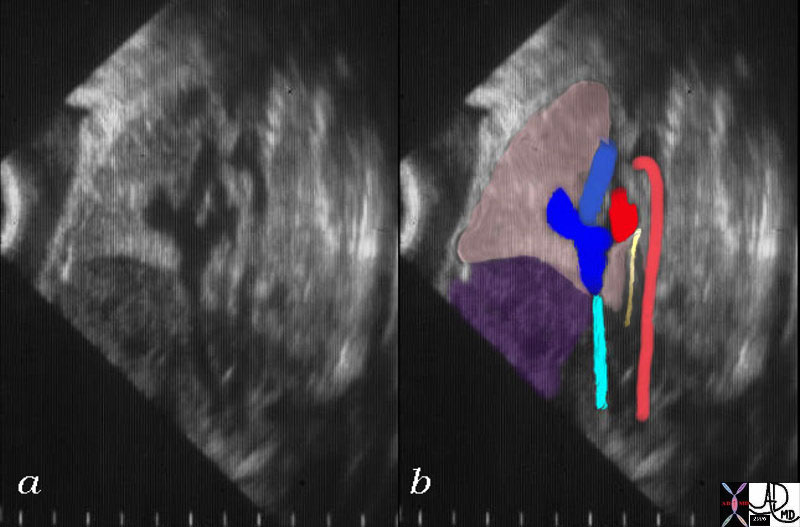
Fetal Aorta |
| 06401c01 heart cardiac fetus right atrium superior vena cava SVC right atrial appendage RAA inferior vena cava IVC left atrium LA esophagus aorta |
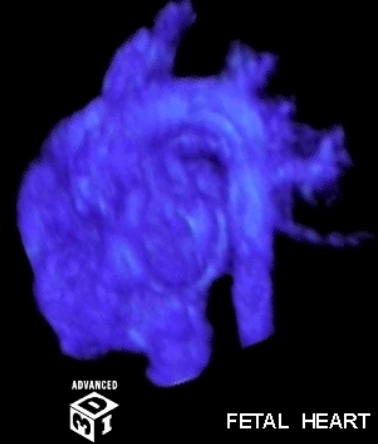
Fetal Aorta |
| 1019h5~1B aorta fetus USscan 3D normal Courtesy PhilipsMedical Systems Davidoff MD |
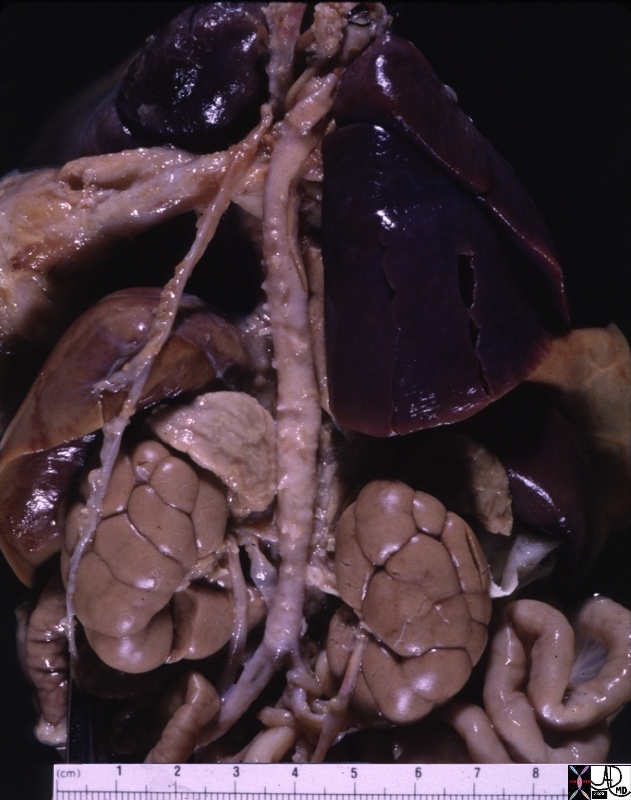
Neonatal Structures |
| 01900.800 adrenal aorta IVC kidney liver lung small bowel ureter diaphragm normal fetal lobation neonate growth time grossanatomy Davidoff MD |
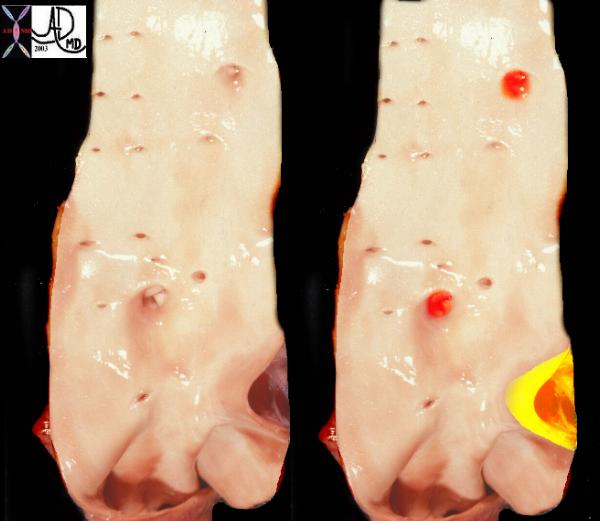
Normal Smooth glistening Endothelial Surface of the Neonatal Aorta
|
| This is a post mortem specimen of the aorta of a patient with pulmonary atresia and bronchial collaterals. Overlaid in red are the enlarged orifices of the origins of the bronchial arteries. In yellow is the entrance of the PDA (patent ductus arteriosus) to the aorta Note in addition the normal appearing shiny appearance of the neonatal intima. Courtesy Ashley Davidoff MD 32628c a79-8 |
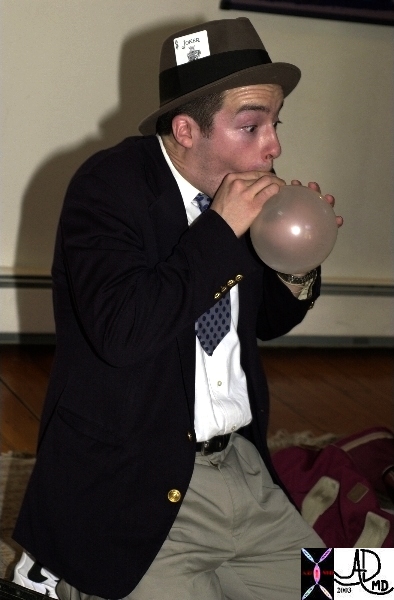
Pressure Tension Radius Laplace’s Law |
| This image shows a famous cardiologist, Dr Jonathan Fisher performing as Zippy the clown revealing and exaggerating the difficulty with surface tension and radius in the early stages of blowing up a balloon. Courtesy Ashley Davidoff MD. 60730b01 code lung physiology balloon surface tension surfactant alveolus alveoli radius principles |
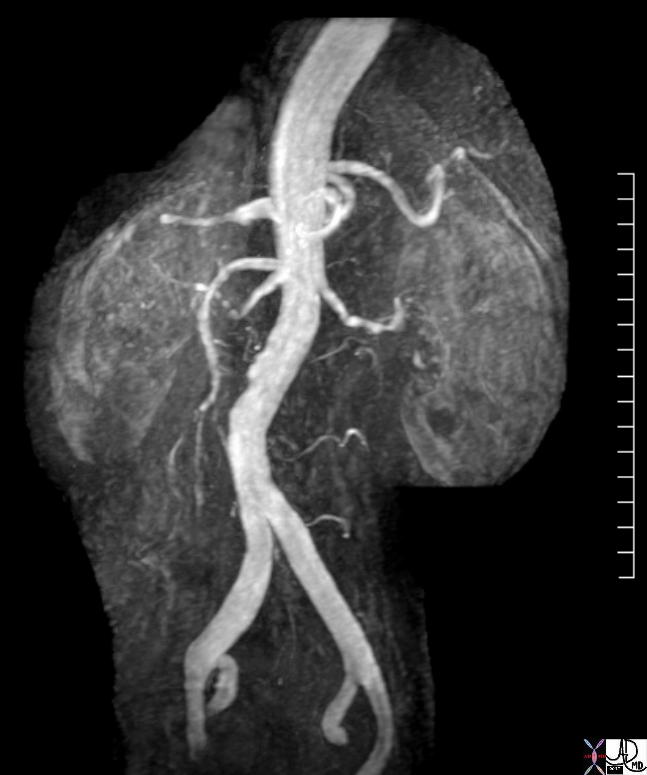
Tortuous Airta – Normal Aging Process |
| The normal aging process results in a loss of elasticity. Elongation and tortuosisty results which is exmplified in the image above, The patient is 60 years old
73384 Ashley Davidoff MD |
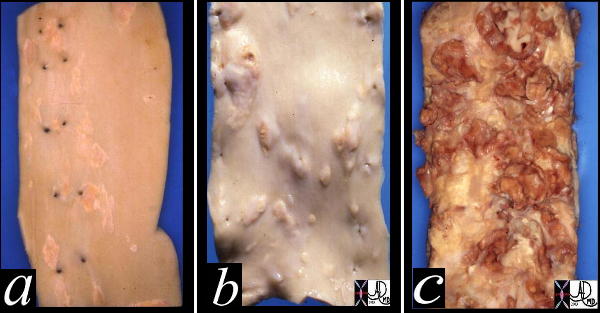
Atherosclerosis |
| This image shows three pathological specimens of the aorta. In the first image minimally raised fatty streaks are noted. (a). In image b, the fibrous capsule causes raised fibrofatty nodules, while in c, there gas been rupture of the plaques, with friable atheromatous plaques abound. Courtesy Henri Cuenoid MD 13420c CVS artery aorta atheroscleosis atheroma fatty streaks fibro |
In between birth and aging the aorta will be subjected to an unbelievable amout of stress. If on the average the heart beats at 60 per minute taking into consideration that it will be fastrr at a yong age and during t day and slower at night by the tme a person reaches 70 years old the aorta would have been subjected to oveer 15 billion pulsations
- In 1 hour @ 60bpm = 3,600 pulsations
- In 24 hours – = 84,600
- In one week = 604,800
- In one month = 18,144,000
- In 1 year = 217,728,000
- In 70 years = 15,240,960,000 pulsations
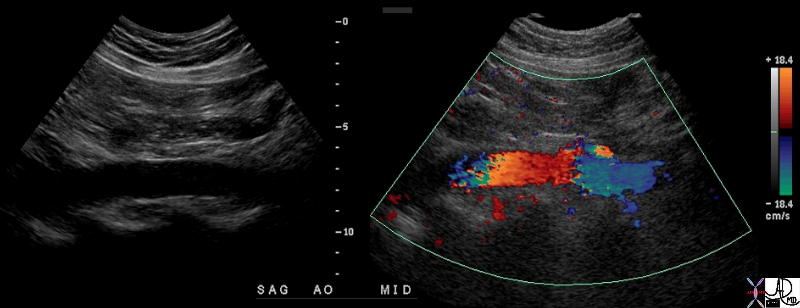 Laminar Flow in the Abdominal Aorta Laminar Flow in the Abdominal Aorta |
| 54 year old male with a normal abdominal aorta showing laminar flow. The first image shows a smooth endothelium and the color flow in the second image is homogeneously red as it flows toward the transducer and homogeneously blue as i flows away from the transducer.
73375c01 Courtesy Ashley Davidoff MD |
 Turbulent flow Turbulent flow |
| This drawing shows the lines and circles of noisy turbulent flow, which is characteristic of flow in the larger airways.
Courtesy of Ashley Davidoff M.D. 42434b07 |
|
|

